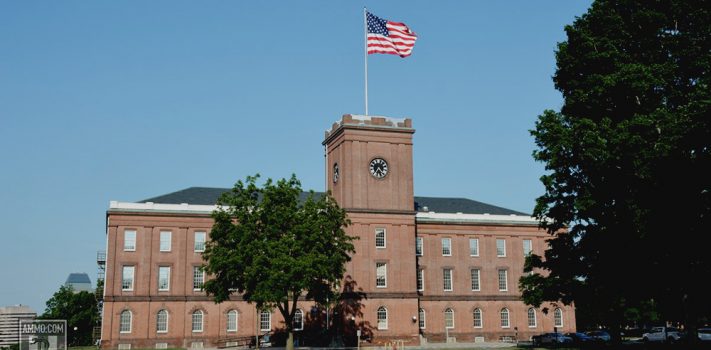Email a copy of 'Commercial Ammo: The Untold History of Springfield Armory' to a friend
19 Comments
- Ad Ready Made Resources, Trekker Water Filtration SystemUsed throughout the World
- Ad Survival RealtyFind your secure and sustainable home. The leading marketplace for rural, remote, and off-grid properties worldwide. Affordable ads. No commissions are charged!


The Springfield Armory National Historic Site is well worth a visit if you are ever in the area. It’s free. Their gun collection is amazing. It’s in Springfield at the site of “Shays’ Rebellion.” https://en.wikipedia.org/wiki/Shays'_Rebellion That was back when Mass. was the forefront of freedom and the 2nd amendment meant something in the state. Today forget it.
The 2nd amendment did not exist at the time of Shays’ Rebellion. https://en.wikipedia.org/wiki/Second_Amendment_to_the_United_States_Constitution#Massachusetts,_June_15,_1780
Wikipedia is wrong. Winchester’s first rifle was the 1860 Henry. The 1866 model was the improved version of the Henry.
The 1860 “Henry” was the original Winchester. Followed by the improved 1866.
This is pretty interesting!
I like historical articles like these. Keep them coming. I always enjoy learning new things about the backgrounds of firearms and the people involved with them, especially anything pertaining to the early American years (Colonial, Revolutionary, Antebellum, Civil War, Reconstruction/Wild West).
Thx, JWR.
Great article! I was glad to see an ammunition manufacturer open in Horseshoe Bend, Idaho a couple of years ago.
I ordered some ammunition from Natchez Shooters Supply, as was recommended on this site last week and was pleasantly surprised to find that for the next day or two, they are having a sale on shipping ! Shipping is just $5 ! Saved me $56 ! Hurry !
https://www.natchezss.com/ I am NOT affiliated with them, I am just a happy customer.
A most excellent read. Thanks
Good article!
Rifling is much older than the mid 19th century. Perhaps you meant the earliest it had widespread military adoption?
S&W is an interesting case and it’s funny you brought up both Beretta and Glock as competitors. The S&W autos and the post WWII Berettas have a lot of the same DNA (via the P.38) and anyone who has owned, shot, and disassembled both can confirm. But the Beretta was A) sexier and B) the winner of the DoD contract. Fast forward to the 21st century, and S&W’s best guns are product improved Glocks, the M&P line. S&W tried the more direct copy approach with the Sigma and got slapped around in court.
The tale About the Knights is also at best very limited truth
A knight facing a group of peasants with some rope,pitchforks,hammers or even rocks with a bad attitude would run. They only had advantage in massed charges or individual combat.
I thought more on Spears, bills, bill hooks, Godendags and such weapons.
But i wouldn´t discard the humble sling
A small stone from a sling would be useless against most armor but a rock that could either unbalance or dent plate would be disastrous to the recipient(crushed limbs or suffocation). To quote C.W. McCall”You call that a rock? It’s no bigger than a grapefruit”
The other game changer was fire or flammable liquids,roasted knight.
The [ancient] armies thought differently from Sumer to the Roman legions. The Assyrians [were said] to value the sling higher than the bow.
Military casings must be thicker and stronger than in sporting ammo because they are subject to routine “abuse” and neglect under battlefield conditions. They have to be able to take a lickin’ and keep on tickin’, much more so than sporting ammo. Nice article.
Which U.S. President did regular target shooting at the White House? “Target practice with Mr Lincoln=https://opinionator.blogs.nytimes.com/2013/08/19/target-practice-with-mr-lincoln/
So did Teddy Roosevelt. On the White House lawn!
“Military ammunition casings tend to have thicker walls because, as a general rule, they are subject to higher pressures than civilian rounds.”
This is because US Military rifle rounds use different powder than civilian round. Military uses Ball powder. Military primers are also swaged into the casings.
“As an example, the 7.62x51mm NATO and the .308 Winchester are basically the same round, but the NATO (military) version has lower pressure.”
This is INCORRECT and the other way around. US military 7.62 X 51 and 5.56 have MUCH higher chamber pressures than their civilian equivalents- .308 and .223. Again because the Military rounds have thicker casings and use the different Ball powder. You do not want to use 7.62 X 51 NATO in a older civilian rifle chambered in .308 or 5.56 NATO in an older civilian rifle chambered in .223.